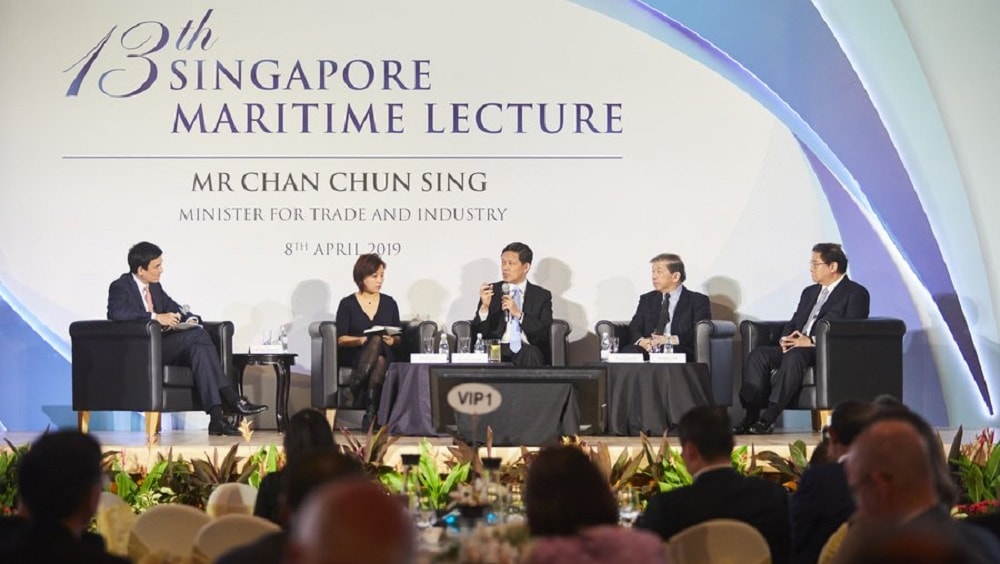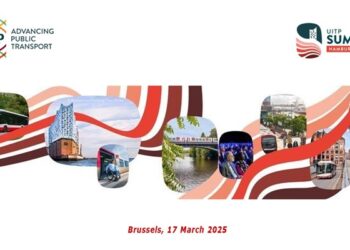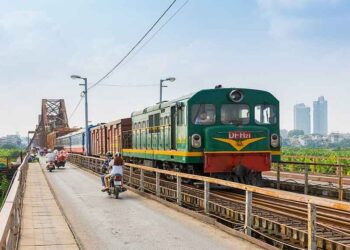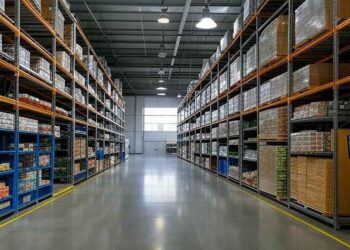The 13th Singapore Maritime Lecture saw eminent industry heavyweights share their insights on global trade and technological developments applicable in the maritime industry earlier today with over 400 C-Level executives.
2 During his keynote titled “Whither Singapore as a Maritime Hub?”, Mr Chan Chun Sing, Singapore’s Minister for Trade and Industry spoke about how Singapore can position itself for the future amidst changes in the maritime industry.
3 Mr Chan then joined a panel discussion with Mr S.S. Teo, Executive Chairman and Managing Director of Pacific International Lines, Mr Samuel Tsien, Group CEO of OCBC Group and Ms Edith Yeung, Partner of 500 Startups. The discussion was moderated by Mr Andreas Sohmen-Pao, Chairman of BW Group and Singapore Maritime Foundation.
Positioning Maritime Singapore for the Future
4 Mr Chan started off his presentation by identifying key driving forces for the maritime industry. These include rising protectionism which could inhibit global trade; increased consumerism in Asia which could create growth opportunities for the shipping industry; technological changes and greater intermodal connectivity that will affect future maritime landscape; and climate change that will shift the shipping regulatory landscape or upend the maritime economic ecosystem in the region.
5 He said, as shipping redesigns its business models for the 21st century, Singapore must also rethink its maritime strategy. Singapore can only retain her Global Hub Port and International Maritime Centre status, if she could navigate the challenges well and harness opportunities that come with the driving forces.
6 Mr Chan shared, to address increased consumerism and climate change, Singapore must continue to establish linkages with key markets. For example, the Comprehensive and Progressive (CPTPP), the ASEAN agreements, EU-Singapore Free Trade Agreement (FTA) and upcoming FTAs like the Regional Comprehensive Economic Partnership (RCEP) and MERCOSUR will open up more markets for maritime businesses. Singapore must also leverage data to create a platform where everyone can participate in global connectivity. Initiatives such as ASEAN Single Window and the Singapore’s Networked Trade Platform will not only help traders transform their businesses but also reap greater efficiencies in time and cost.
7 Mr Chan added, to succeed as a maritime hub, physical trade should not be seen in isolation but as a multifaceted connectivity that includes data, talent, technology and finance flows. Singapore also needs to broaden and deepen her maritime services offerings by strengthening complementary adjacent sectors such as finance, insurance, commodity trading and logistics as well as nurture a pipeline of Singapore maritime experts. In addition, Singapore must defend open rules-based trading order, albeit the rules need updating in the new economy, to promote predictable pro-business and open environment.
8 Mr Chan concluded Singapore is defined by how she responds to the challenges such as by working with like-minded partners and diversifying her sources, making services and technology as Singapore’s maritime comparative advantage and developing a global maritime platform that transcends geography.
Global trade, Belt and Road Initiative and data platforms in focus
9 Mr Sohmen-Pao noted that global trade volumes have grown at a slower pace compared to real GDP growth since 2011, as compared to 1990 to 2007.
10 Despite the slowdown, Mr Tsien maintained a positive view, noting that service trade – an important element of capital flow – has increased due to a growing middle class. And while more goods are being manufactured at the point of destination, which reduces trade, this is not a worrying sign, as long as the GDP of major economies continue to rise.
11 Mr Teo shared that growth has shifted to Southeast Asia, Africa and Latin America. Intra-ASEAN trade would grow positively, with the ASEAN Economic Community expected to be the fourth largest market in the world by 2035. Standing at more than 650 million, half of which are under 20 years old, ASEAN would have bigger spending powers in the years ahead.
12 On the impact of technology changes on trade and changing demand-supply patterns, for Ms Yeung, e-commerce will continue to take dominance, with many Internet giants paying more attention to the payment infrastructure of platforms that they invest in, such as Alibaba’s investment in Lazada.
13 On China’s Belt and Road initiative, Mr Teo said that Singapore could value add to China, given our expertise in key areas such as project supervision, financing and arbitration. Mr Chan added that Singapore could contribute to China by looking at projects based on market and commercial principles.
15 In closing, in response to Mr Sohmen-Pao’s question on whether Singapore government would continue to give proactive support to the maritime industry, Mr Chan gave a resounding yes. Going forward, Singapore needs to complement the three physical dimensions of connectivity – air, land and sea – with five non-physical dimensions – data, finance, rules, talent and technology – to reinforce her survival. If Singapore could leverage these five non-physical dimensions, the nation will go down in history as the first country to transcend her geographical size and location.


































